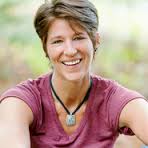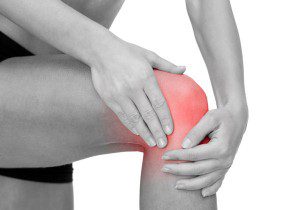Contributing Writer for Wake Up World
Have you wondered why after you pull a muscle or hurt your back, it seems like an uphill battle to regain the flexibility you once had? It seems the more you stretch, the tighter you get?
Or how about your range of motion; is it still limited or not where it use to be? And is there still a bit of lingering annoying pain?
Are people telling you (maybe your doctor) that you have arthritis? Well not so fast!
If you are doing everything right, such as stretching, moving your body (exercising), eating right, drinking plenty of water, getting lots of rest, and going to a chiropractor for adjustment, the answer may be that you have a scar tissue problem.
What Is a Scar Tissue Problem?
It’s simple. After an injury, your body immediately starts to protect itself by contracting the muscles around the injury (you know this as muscle spasms) and rushes blood to the area which causes the swelling. But once the injured area begins to heal, the soft tissue that was damaged, as well as the soft tissue in the surrounding area, regrow by intertwining together creating stronger cross fibers than it was before the injury had occurred (much like winding rubber bands together). Though the area is now stronger, is also less flexible. This than causes reduced range of motion and added tension to the joints where the muscle and/or tendon is attached.
Adding all of this together equals pain!
What Can You Do About It?
Cross fiber (or cross friction) massage is extremely effective. Either by hand or sometimes with the aid of an instrument, this type of massage can break up the scar tissue so the body can then re-absorb it. It is common to experience some minor discomfort during this type of massage and even minor bruising afterwards.
There are some chiropractors who use a technique called Graston, which I have personally found to be extremely effective. Most of my patients recovered from both acute and chronic injuries in half the time than by adjusting alone.
The medical route usually offers pain killers and muscle relaxers. Though you may “feel” better temporarily, it is doing nothing more than masking the symptoms of the injury. The scar tissue that follows may sometimes be removed via surgery, but clearly, this approach is not as healthy for the body or your wallet!
Is There Anything Else You Can Do To Help The Healing Process?
Yes! Ensuring optimal nutrition is vital. Eating whole, organic, non-processed foods and supplementation (especially oil supplements such as fish oil and turmeric to help reduce inflammation) are key to help your body recover from the injury; whether acute, chronic, or simply from overuse (common with sports or just living life).
Another amazing supplement is the enzyme called serrapeptase. Patients in Japan are often told to take this enzyme in order to help prevent the build of scar tissue.
“Serrapeptase breaks up excess fibrin eliminating the need for the body’s defense mechanism known as inflammation. The body is then able to clean out the burdensome dead tissues and fibrin growths, allowing for the healing process to begin more effectively.”
Water, water, water! Staying hydrated is too often overlooked. I also often recommend squeezing some Trace Minerals in a bottle of filtered water to help your body better absorb the water. Long ago we drank mineral rich water, but today our water is what I consider “dead water”. Gone are the vital trace minerals we need for health replaced with dangerous chemicals such as: disinfectants, inorganic and organic chemicals, and pharmaceutical drugs, etc.
Be aware that there are many tropical oils and ointments that help with pain, but do little to help with the healing process. However, there are some that do both. Personally, I am a big fan of Po Sum On Oil and DMSO. In fact, I swear by them!
As you begin to heal it’s important to stretch and do strengthening exercises. It’s also comforting to use moist heat (clay, rice, or bean filled packs). Dry heat, like from an electrical heating pad, may ease the pain while the heat is on, but the dry heat actually can draw moisture out of the muscle tissue causing you to feel stiffer later on. Ice is usually only recommended immediately after an injury or re-injury.
If you can handle the heat, Bikram Yoga is amazing for internal healing, and is an efficient and safe means of loosening up your body to regain flexibility.
Living with pain is not an option! With a little work, you can feel better than ever… and more!
Previous articles by Dr. Michelle Kmiec:
- Are Your Thoughts and Beliefs Really Yours?
- The Truth About Insomnia, Depression and Anxiety
- Natural Cure for Depression Silenced?
- The Link Between Stress and Intestinal Parasites – and What to Do About Them
- Arthritis Cure Found in Nature
- The Sun & Skin Cancer: the Truths, Pseudo-Truths & Lies of Mainstream Science
- A Natural Cure for Migraines
- Natural Cure for Chronic Pain Syndromes Silenced by the Medical Establishment
- Fluoride Linked to Coronary Heart Disease
- The REAL Truth Behind Sugar
- How Clean Is Your Drinking Water?
About the author:
 Dr. Michelle Kmiec is a chiropractic physician who also holds a Bachelor of Science degree in Human Biology, and a minor in Medical Research. She is a life-long athlete who after curing herself 100% naturally from MS and anxiety, became an avid nutrition and health researcher/promoter.
Dr. Michelle Kmiec is a chiropractic physician who also holds a Bachelor of Science degree in Human Biology, and a minor in Medical Research. She is a life-long athlete who after curing herself 100% naturally from MS and anxiety, became an avid nutrition and health researcher/promoter.
The founder of the website Online Holistic Health and author of “Healthcare Freedom Revolution: Exposing the Lies, Deceit and Greed of the Medical Profession“, Dr. Kmiec has been featured in many health magazines and websites, and has been a guest on radio talk shows in the USA, Canada, United Kingdom, and Australia.
For more information, visit Online Holistic Health or connect with Dr. Michelle Kmiec on Facebook, Twitter and LinkedIn.

If you've ever found value in our articles, we'd greatly appreciate your support by purchasing Mindful Meditation Techniques for Kids - A Practical Guide for Adults to Empower Kids with the Gift of Inner Peace and Resilience for Life.
In the spirit of mindfulness, we encourage you to choose the paperback version. Delve into its pages away from screen glare and notifications, allowing yourself to fully immerse in the transformative practices within. The physical book enriches the learning process and serves as a tangible commitment to mindfulness, easily shared among family and friends.
Over the past few years, Wake Up World has faced significant online censorship, impacting our financial ability to stay online. Instead of soliciting donations, we're exploring win-win solutions with our readers to remain financially viable. Moving into book publishing, we hope to secure ongoing funds to continue our mission. With over 8,500 articles published in the past 13 years, we are committed to keeping our content free and accessible to everyone, without resorting to a paywall.







